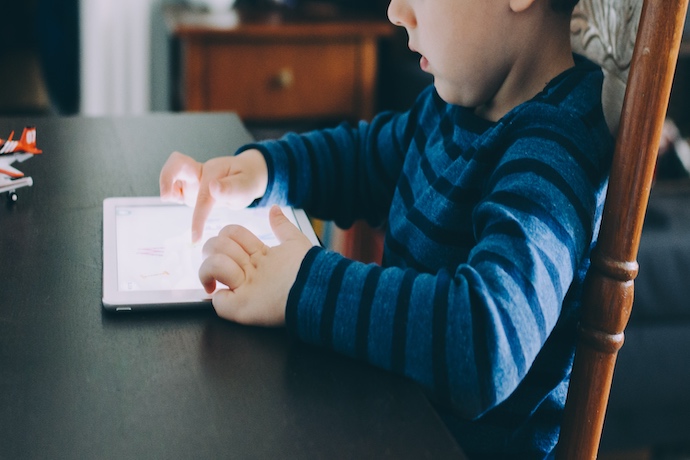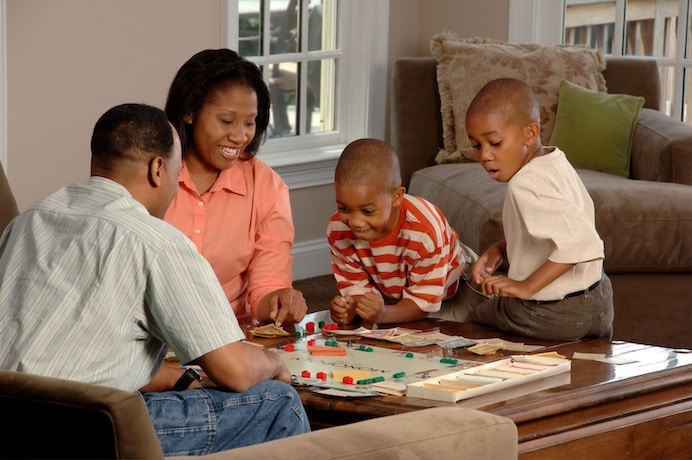Understanding Screen Time
Screen time refers to the amount of time spent by individuals, especially children and teenagers, using electronic devices such as an Iphone, other smartphones, tablets, computers, and gaming consoles. It includes activities like watching videos on YouTube, playing games, browsing social media apps or websites from app stores like Apple Support.
Studies have shown that excessive screen time can lead to sleep disturbances and decreased physical activity levels in children, making it crucial for parents to set screen time limits and encourage alternative offline pursuits.
As parents, it's important to be aware of the effects of excessive screen time on our children. Studies have shown that prolonged exposure to screens can lead to issues such as sleep disturbances and decreased physical activity levels. To ensure a healthy balance for our kids' online activities, setting screen time limits is crucial. By establishing clear boundaries and encouraging alternative offline pursuits like outdoor play or creative hobbies, we can guide them towards a more balanced lifestyle.

Photo by Alexander Dummer on Unsplash
What is Screen Time?
Screen time refers to the amount of time spent using electronic devices such as TVs, tablets, and smartphones. It includes activities like watching videos, playing games, or using apps from the app store. Understanding different types of screen time is crucial as it helps parents monitor and guide their children's online activities effectively. Addressing screen time is important because it can impact a child's development and well-being in various ways. By setting limits and utilising resources like Apple support, parents can ensure a healthy balance for their kids' screen time experiences.
Effects of Excessive Screen Time
Impact on physical health and sedentary lifestyle: Excessive screen time can lead to a sedentary lifestyle, limiting physical activity and contributing to various health issues such as obesity and poor posture. Encouraging outdoor playtime and setting regular breaks from screens can promote a more active and balanced lifestyle for your kids.
Negative effects on mental well-being and social interaction: Spending excessive time in front of screens has been linked to increased feelings of anxiety, depression, and isolation. It may hinder the development of crucial social skills, leading to difficulties in forming relationships with peers. Balancing screen time with face-to-face interactions and encouraging digital detox periods can help nurture healthier mental well-being for your children.
Educational implications & cognitive development: While some educational apps available through app stores like Apple Support can enhance learning experiences, excessive screen time without proper guidance may impede cognitive development. Too much exposure to passive content might limit critical thinking skills in children. It’s important to monitor the quality of digital content consumed by your kids while fostering offline activities that stimulate creativity, problem-solving abilities, and imagination.

Photo by Kelly Sikkema on Unsplash
Setting Screen Time Limits
Importance of establishing boundaries and rules:
- Setting screen time limits helps create a healthy balance between online activities and offline experiences.
- It promotes better sleep, physical activity, and social interactions for children.
Considerations for age-appropriate limits:
- Younger children may require shorter screen time durations compared to older kids.
- Take into account the content they are engaging with to ensure it is suitable for their age group.
Tips for effective communication with kids about screen time rules:
- Involve your children in the decision-making process by discussing why screen time limits are important.
- Use positive reinforcement when they adhere to the agreed-upon rules, like earning extra playtime or rewards from app stores.
Remember, finding the right balance is key. By setting reasonable screen time limits, you provide guidance while allowing your kids to enjoy technology responsibly. Don't hesitate to reach out if you need support from Apple Support or other trusted resources along this journey.
Creating a Healthy Screen Time Routine
Creating a healthy screen time routine for your family starts with establishing clear rules. Set specific limits on the amount of time your children can spend online each day, and make sure they understand and respect these boundaries. In addition, create guidelines for appropriate content and behaviour while using screens to ensure a safe and positive digital environment.
Engaging in screen time together as a family is another important aspect of creating a healthy routine. Instead of simply allowing your kids to use their devices independently, join them in their online activities from time to time. This not only allows you to monitor what they're doing but also provides an opportunity for bonding and shared experiences.
Encouraging offline activities is crucial in finding the perfect balance between screen time and other pursuits. Encourage your children to engage in physical activities, hobbies, or spending quality time with friends and family away from screens. By promoting a well-rounded lifestyle that includes both online and offline activities, you can help foster their overall development.
Remember that creating a healthy screen time routine requires consistency, open communication with your children about expectations, setting realistic goals based on age appropriateness, modelling good habits yourself as an adult role model ,and being flexible enough to adapt when necessary.

Photo by Kelly Sikkema on Unsplash
Establishing Clear Rules
Setting clear rules is essential when it comes to managing screen time for your family. One effective way is by setting time limits for screen usage. By determining how much time your kids can spend on screens each day, you can ensure they have a healthy balance between digital and offline activities.
Another important aspect of establishing clear rules is defining specific times when screens are allowed or not allowed. For example, you could designate certain hours during the day as "screen-free" times where everyone in the family engages in other activities together. This helps create a routine and encourages quality time spent away from screens.
Lastly, it's crucial to create consequences for breaking the rules. Clearly communicate what happens if your children exceed their allocated screen time or use devices during forbidden hours. Consistent enforcement of these consequences will help reinforce the importance of following the established guidelines and teach responsibility regarding screen usage.
By implementing these strategies and setting clear boundaries around screen time, you'll be able to find that perfect balance for your kids while promoting healthier habits and strengthening family bonds.

Photo by National Cancer Institute on Unsplash
Engaging in Screen Time Together
Watching a movie as a family and discussing it afterwards allows for shared entertainment and meaningful conversations as part of family sharing. It's a great way to bond and understand your children's perspectives.
Playing interactive educational games together combines fun with learning, making screen time productive. It promotes active engagement, problem-solving skills, and critical thinking.
Exploring new apps or websites together opens up exciting opportunities to discover new interests as a family. Whether it's exploring virtual museums or trying out creative platforms, this can encourage curiosity and spark interesting discussions.
Remember that engaging in screen time together is not only about the activity itself but also about creating moments of connection and quality time with your kids.
- Choose movies that are age-appropriate yet engaging for everyone.
- Let each family member take turns choosing the game to play.
- Research beforehand to find educational apps or websites suitable for different ages.
By actively participating in your children's online experiences, you can guide them towards beneficial content while strengthening your relationship at the same time.

Photo by SCREEN POST on Unsplash
Encouraging Offline Activities
Planning outdoor activities like hiking, biking, or picnics can be a great way to encourage your kids to disconnect from screens and connect with nature. Take some time each week to plan an adventure together as a family. Explore local parks or trails, pack a delicious picnic lunch, and enjoy the fresh air while engaging in physical activity.
Promoting hobbies such as drawing, playing an instrument, or sports not only keeps your kids entertained but also helps them develop new skills and interests. Set aside dedicated time for these activities each day or week. Provide them with the necessary materials or enroll them in classes where they can learn and practice their chosen hobbies.
Encouraging reading books instead of spending time on screens opens up a world of imagination for your children. Create cozy reading corners at home with comfy cushions and shelves filled with exciting books that cater to their interests. Make it a habit to spend at least 30 minutes before bedtime diving into captivating stories together.
By actively planning outdoor adventures, promoting hobbies that ignite their creativity, and fostering the love for reading books in your children's lives, you'll help strike a healthy balance between screen time and offline activities while creating lasting memories as a family along the way.

Photo by Kelly Sikkema on Unsplash
Choosing Age-Appropriate Content
1. Check the ratings and reviews: Before allowing your kids to access any online content, take a moment to check out its ratings and read some reviews. This will give you an idea of whether it's suitable for their age group or not.
2. Set parental controls: Many devices and platforms offer parental control features that allow you to restrict certain types of content. Take advantage of these tools to ensure that only age-appropriate material is accessible to your children.
By taking these simple steps, you can help create a safe online environment for your kids, where they can learn and have fun without being exposed to inappropriate content.
Educational and Informative Content
Engaging Learning Apps are a fantastic way to make screen time educational for your kids. With interactive games and quizzes, these apps can reinforce important concepts in a fun and engaging way. Look for apps that cover various subjects like math, science, and language skills to keep learning diverse.
Educational Websites for Kids provide a wide range of resources to help children learn while having fun online. These websites offer interactive activities, videos, and worksheets on different topics such as history, geography, and art. By exploring these sites together with your kids, you can encourage their curiosity and support their learning journey.
Interactive E-books combine the joy of reading with interactive elements that enhance the learning experience. With features like animated illustrations or audio narration, these e-books captivate young readers' attention while promoting literacy skills. Choose e-books that align with your child's interests or explore educational themes to foster their love for reading.
Remember: Embrace technology as an educational tool by incorporating engaging learning apps into your child's screen time routine. Explore reputable educational websites together during family browsing sessions. And don't forget about the value of interactive e-books in nurturing a lifelong love for reading!
Monitoring and Filtering Tools
Monitoring and filtering tools are essential for parents who want to ensure their children's online safety and control their screen time effectively. Here are some useful options:
- Parental Control Apps: These apps provide a range of features, such as content filtering, app blocking, and time restrictions, allowing parents to monitor and manage their child's device usage.
- Web Filters and Blockers: These tools help prevent access to inappropriate websites by blocking specific categories or individual sites that may be harmful or unsuitable for young users.
- Time Limits and Usage Trackers: Setting limits on daily screen time can be easily achieved with these tools. They also track usage patterns, giving parents insights into how much time their children spend on various activities online.
By using these monitoring and filtering tools effectively, parents can strike the right balance between allowing digital exploration while ensuring a safe online environment for their kids.
Balancing Screen Time with Other Activities
When it comes to balancing screen time with other activities, physical exercise and outdoor play are essential. Encourage your kids to engage in sports or simply go outside for a bike ride or walk. Not only will this keep them active, but it also helps reduce the amount of time spent in front of screens.
In addition to physical activity, quality family time is crucial for finding the perfect balance. Plan regular activities that involve everyone in the family, such as game nights, cooking together, or going on outings. This not only provides an opportunity for bonding but also allows children to understand that there's more to life than just screens.
Physical Exercise and Outdoor Play
Engaging in sports or physical activities is a fantastic way to get your kids moving and keep them active. Whether it's playing soccer, basketball, or even just going for a swim, these activities provide not only physical benefits but also help develop important life skills like teamwork and perseverance.
Taking walks or bike rides as a family is not only a great way to bond but also an opportunity for everyone to get some fresh air and exercise. It's amazing how something as simple as taking a stroll through the neighbourhood can turn into cherished memories and quality time spent together.
Participating in outdoor games adds an element of fun and excitement to physical exercise. From classic games like tag or hide-and-seek to more structured activities like scavenger hunts, there are plenty of options that will keep your kids entertained while they stay active outdoors. So grab some balls, frisbees, or any other equipment you need - it's time for some family-friendly competition!

Photo by Ann Danilina on Unsplash
Quality Family Time
Having regular family meals together not only provides an opportunity for nourishment but also fosters meaningful connections. By sitting down and sharing a meal, families can engage in conversation, catch up on each other's lives, and strengthen their bond. Playing board games or card games as a family is another way to spend quality time together. It promotes teamwork, problem-solving skills, and friendly competition while creating lasting memories. Planning fun outings or day trips allows families to explore new places, enjoy new experiences, and create shared adventures.
- Engage in conversation during family meals
- Strengthen familial bonds through shared meals
- Foster teamwork and problem-solving skills through board games
- Create lasting memories with fun outings or day trips
Socialising with Friends and Peers
Encouraging playdates with friends is a great way for children to socialise and develop important interpersonal skills. By setting up regular playdates, you can create opportunities for your child to interact with their peers in a fun and relaxed environment. It also allows them to learn how to navigate different personalities and build lasting friendships.
To promote face-to-face interactions without screens, consider organising 'screen-free' social events for your child and their friends. This could involve hosting a game night or arranging outdoor activities like scavenger hunts or sports games. These types of events not only encourage socialization but also provide an opportunity for kids to engage in physical activity and develop teamwork skills.
Another effective way for children to connect with their peers is by joining community clubs or organisations. Whether it's a sports team, art class, or scouting group, these settings offer structured environments where kids can meet new people who share similar interests. Being part of such groups fosters camaraderie and helps expand your child's social circle beyond school.
- Schedule regular playdates with friends
- Organise screen-free social events
- Encourage participation in community clubs/organisations
Leading by Example
When it comes to screen time, it's crucial that parents lead by example. Instead of constantly checking our phones or glued to the TV, let's show our kids how to have a healthy balance with technology. By setting limits for ourselves and prioritising quality family time offline, we can create an environment where our children learn the importance of moderation and being present in the moment.
In addition to guiding our children's screen time, it's essential that we set boundaries for ourselves as well. By consciously limiting the amount of time we spend on screens and making sure those boundaries are visible to our kids, we teach them self-discipline and demonstrate that there is more to life than virtual connections. When they see us engaging in other activities like reading books or enjoying outdoor adventures without relying on devices, they'll be inspired to do the same.
Embracing a Healthy Tech-Use Culture
Creating Screen-Free Zones in your home is a simple yet effective way to promote healthy tech-use habits. Designate certain areas, like the dining table or bedrooms, as screen-free zones where electronic devices are not allowed. This encourages your family to disconnect from their screens and engage in other activities, such as reading, hobbies, or spending quality time together.
In addition to creating screen-free zones, it's important to encourage outdoor activities for your kids. Encourage them to play sports, explore nature, or simply spend time outside enjoying fresh air and sunshine. Outdoor activities provide much-needed physical exercise and offer a break from the sedentary lifestyle that excessive screen time can contribute to.
Promoting face-to-face interactions is crucial in fostering a healthy tech-use culture within your family. Encourage open communication by setting aside dedicated family time without any distractions from technology. Engage in conversations over meals or plan regular game nights where you put away devices and focus on connecting with one another through genuine interaction.
Remember, embracing a healthy tech-use culture starts with small changes like creating screen-free zones at home while encouraging outdoor activities and promoting face-to-face interactions. By doing so, you'll be providing essential guidance for your children's online activities while also nurturing stronger bonds within your family.
Setting Boundaries for Yourself
Designating tech-free times throughout the day can help you establish healthy boundaries for yourself and your family. Whether it's during meal times, before bedtime, or during family activities, setting aside specific periods without screens can promote quality interactions and reduce reliance on technology.
Limiting social media usage is another effective way to set boundaries for yourself. Instead of mindlessly scrolling through endless feeds, try allocating a specific time slot each day for social media engagement. This allows you to stay connected while also avoiding excessive screen time that can negatively impact productivity and mental well-being.
Finding alternative hobbies is essential when it comes to setting boundaries for yourself in the digital age. Encouraging activities such as outdoor exploration, reading books, or engaging in creative pursuits not only provides a break from screens but also promotes personal growth and development.
Remember, finding the perfect balance between technology use and offline activities is key in today's screen-dominated world. By designating tech-free times, limiting social media usage, and exploring alternative hobbies, you can create healthier habits that benefit both you and your family.

Photo by Sara Kurfeß on Unsplash
Seeking Professional Guidance
When it comes to navigating the world of screen time for your family, consulting with experts and child psychologists can provide invaluable guidance. These professionals have a deep understanding of child development and can help you create effective strategies for setting boundaries and promoting healthy online habits.
With their expertise, they can offer personalised advice tailored to your specific family dynamics. Whether it's determining appropriate screen time limits or addressing concerns about content exposure, seeking professional guidance ensures that you're making informed decisions that prioritise your children's well-being. Don't hesitate to reach out for support on this journey towards finding the perfect balance in today's digital age.
Consulting Experts and Child Psychologists
- Benefits of seeking professional guidance
When it comes to navigating the complexities of raising children in the digital age, consulting experts and child psychologists can provide invaluable support. They offer a wealth of knowledge and experience that can help parents understand the impact of screen time on their kids' development. By seeking their guidance, you gain access to evidence-based strategies and tailored advice that can empower you to create a healthy balance for your family.
- How to find reputable experts and psychologists
Finding trustworthy professionals is essential when seeking guidance for your family's needs. Start by asking for recommendations from friends, family, or even other parents at your child's school. Additionally, look for professionals who have credentials or certifications in child psychology or related fields. Online directories and review platforms can also be helpful resources in identifying reputable experts who specialise in screen time management.
- The importance of tailored advice for your family's needs
Every family is unique, with different dynamics, values, and goals. That's why tailoring advice specifically to meet your individual circumstances is crucial when it comes to managing screen time effectively. Consulting with experts allows you to receive personalised recommendations based on factors such as your children's ages, interests, and developmental stages. With tailored advice at hand, you'll be better equipped to establish boundaries that align with your values while promoting healthy digital habits within the context of your own home environment.
Remember: You don't have to face this challenge alone! Seeking professional guidance from experts and child psychologists ensures that you're taking informed steps towards finding the perfect balance between technology use and quality family time.
FAQ: Screen Time Family: Finding the Perfect Balance for your Kid
In this technology-driven world, it can sometimes feel like screens have taken over our lives. From smartphones to tablets to laptops, it's easy for both parents and children to get caught up in the digital world. But it's important to remember that there are plenty of activities families can do together that don't involve screens at all. So, put down those devices and let's explore some fun and screen-free options for quality family time! 1. Get outside and explore nature: There's nothing quite like spending time in the great outdoors. Take a family hike in a local park, go for a bike ride, or have a picnic in a picturesque spot. Not only will you get some fresh air and exercise, but you'll also have the opportunity to connect with each other and with nature. 2. Have a family game night: Dust off those board games that have been sitting in the closet and gather around the table for a night of friendly competition. From classic games like Monopoly and Scrabble to newer favourites like Settlers of Catan and Ticket to Ride, there's a game out there for every age and interest. Get ready for some laughter, strategy, and quality bonding time. 3. Cook and bake together: Spending time in the kitchen as a family can be a great way to teach your children valuable life skills while also creating delicious meals together. Let each family member choose a recipe, gather the ingredients, and work as a team to prepare a homemade feast. Not only will you create lasting memories, but you'll also have some tasty treats to enjoy at the end. 4. Explore arts and crafts: Embrace your creative side as a family by engaging in arts and crafts projects. Whether it's painting, drawing, pottery, or even knitting, there are endless possibilities for artistic expression. Set up a designated art space in your home and let everyone's imagination run wild. You can even create a family gallery to display your masterpieces! 5. Start a family book club: Reading is a wonderful activity that can transport you to different worlds and spark your imagination. Choose a book that the whole family can enjoy and set aside some time each week to discuss what you've read. This not only promotes literacy and critical thinking skills but also encourages open and meaningful conversations. 6. Volunteer together: Giving back to the community is a great way to bond as a family and teach your children about the importance of helping others. Find a local charity or organisation that aligns with your family's interests and spend some time volunteering together. Whether it's serving meals at a homeless shelter, cleaning up a local park, or organising a donation drive, your actions can make a positive impact on those in need. Remember, the goal is to find activities that allow you to connect with each other and create lasting memories. By unplugging from screens and engaging in these screen-free activities, you'll not only strengthen your family bond but also provide your children with a well-rounded childhood. So, put down those devices, grab some art supplies or board games, and start creating those special moments together!
Excessive screen time can have an impact on our kids' physical health. Spending hours glued to screens can lead to a sedentary lifestyle, which may increase the risk of obesity and other related health issues. Encouraging our little ones to engage in physical activities, like outdoor play or family walks, can help combat these concerns and keep them active and healthy. But it's not just physical health that we need to keep in mind. Excessive screen time can also have an impact on our kids' mental wellbeing. Studies have shown that spending too much time in front of screens can lead to sleep problems, decreased attention span, and even increased feelings of anxiety and depression. It's important for us to set boundaries and encourage our kids to have a healthy balance between screen time and other activities, such as reading, hobbies, or spending quality time together as a family. Another health risk to consider is the impact of screen time on our kids' eyes. Staring at screens for long periods can cause strain on their eyes, leading to symptoms such as dryness, blurred vision, and headaches. To protect their eyes, it's recommended to follow the 20-20-20 rule: every 20 minutes, encourage your kids to take a 20-second break and look at something 20 feet away. This helps to reduce eye strain and give their eyes a much-needed rest.
Ah, the great debate of our modern era - when is the right time to introduce screens to our little ones? As a family expert, I'm often asked this question, and while there is no one-size-fits-all answer, I can certainly offer some helpful tips and strategies for parents navigating this digital age. First and foremost, it's important to remember that every child is different. Some kids may show an interest in screens earlier than others, while some may not be as interested at all. There is no magic age that applies to every child, so it's essential to consider your child's individual needs and development. That being said, experts generally recommend holding off on introducing screens to children under the age of 18 months. During this critical period of brain development, young children benefit most from hands-on, interactive play and real-world experiences. So, instead of reaching for the tablet, encourage your little one to explore their surroundings, play with toys, and interact with you and their siblings. Around the age of 2, you can start incorporating screens into your child's life, but in a limited and supervised manner. Choose age-appropriate content, such as educational apps or shows that promote learning and creativity. Be mindful of the amount of screen time your child is exposed to and aim for a healthy balance with other activities like outdoor play, reading, and social interactions. As your child grows older, you can gradually increase their screen time allowance, but always keep an eye on the content they are consuming. Set clear boundaries and rules about screen time, such as limiting it to certain hours of the day or requiring them to complete their chores and homework first. It's also important to actively engage with your child while they are using screens. Encourage discussions about what they are watching or playing, and use it as an opportunity to teach them about responsible digital citizenship. Teach them about online safety, the importance of privacy, and how to navigate the digital world in a healthy and respectful way. Another tip is to create screen-free zones or times in your home. For example, establish a rule that screens are not allowed during mealtimes or in bedrooms. This encourages face-to-face interactions and ensures that screens don't interfere with important family moments or sleep routines. And let's not forget about leading by example. As parents, it's important for us to model healthy screen habits. If we are constantly glued to our own devices, our children are likely to follow suit. So, make a conscious effort to limit your own screen time and prioritise quality time with your family. In conclusion, there is no definitive age for introducing screens to children. It ultimately depends on your child's individual needs and development. However, it's important to prioritise hands-on, interactive play and real-world experiences during the early years. When the time does come to introduce screens, be mindful of the content, set clear boundaries, and actively engage with your child. And remember, leading by example is key.
It's a topic that can divide opinions among parents, but let me tell you, there are actually some benefits to be found in those moments spent huddled around the TV or cuddled up with a tablet. Yes, you heard me right! Now, before you gasp in disbelief, let me explain. We all know that too much screen time can be detrimental to our kids' health and social development. But when used wisely and in moderation, it can actually bring some unexpected benefits to the whole family. So, let's dive into the positive side of family screen time! First and foremost, family screen time can be a fantastic bonding experience. Picture this: you're all snuggled up on the couch, popcorn in hand, watching a movie or a TV show together. The shared laughter, gasps, and even tears can create lasting memories and strengthen your family's connection. It's a chance to escape the hustle and bustle of daily life and enjoy some quality time together. Another benefit is the educational value that some screen time can offer. There are countless educational apps, websites, and programs available that can help your children learn new skills, explore different subjects, and expand their knowledge. Whether it's a fun math game or a captivating documentary, screen time can introduce your kids to a world of learning opportunities. Let's not forget the entertainment factor. We all need a bit of relaxation and entertainment in our lives, and screen time can be a great way to unwind and enjoy some downtime as a family. Whether it's watching a movie, playing a video game, or even just scrolling through funny videos together, it can be a chance to let go, laugh, and have fun as a family. Now, I'm not saying that screen time should replace other activities like outdoor play or reading books. It's all about finding a balance and ensuring that screen time is used in a mindful and intentional way. But when used in moderation and with the right content, it can definitely be a source of enjoyment and connection for the whole family.
Parental Control Apps and Resources
Overview of popular parental control apps: With so many options available, it can be overwhelming to choose the right parental control app for your family. Some popular choices include Bark, Qustodio, and Net Nanny. These apps offer a range of features such as content filtering, screen time limits, and monitoring tools to help you keep an eye on your child's online activities.
Features to look for in a good resource: When selecting a parental control app or resource, it is important to consider certain features that will best suit your needs. Look for apps that provide customisable settings for age-appropriate restrictions, real-time alerts and notifications regarding your child's internet usage, and easy-to-use interfaces that allow you to manage multiple devices from one central location.
Tips on effectively implementing parental controls: To ensure that parental controls are effective in guiding your children's online activities, communication is key. Have an open conversation with them about why these measures are necessary and how they can benefit from responsible screen time usage. Additionally, regularly review the settings and restrictions you have put in place based on their age and maturity level. By staying involved and informed about their digital world while respecting boundaries, you can create a safe environment where they can thrive both offline and online.
How much screen time is too much for a family?
Hey there, parents! We know how challenging it can be to navigate the world of screen time with your kids. With technology becoming integral part of our lives, it's only natural that our children are drawn to screens. But how much is too much? Well, let's dive into this topic and find some answers together.
Firstly, it's important to understand that there isn't a one-size-fits-all answer to this question. The appropriate amount of screen time for a family can vary depending on various factors, such as your child's age, their individual needs, and the types of activities they engage in online.
The American Academy of Pediatrics (AAP) recommends different guidelines for different age groups. For children aged 2 to 5, they suggest limiting screen time to one hour per day of high-quality, educational content. For children aged 6 and older, they advise setting consistent limits on the time spent using media and ensuring it doesn't interfere with their daily activities, such as sleep and physical exercise.
While these guidelines can serve as a helpful starting point, it's important for you, as a parent, to assess what works best for your family. Here are a few tips and strategies to help you find the right balance:
1. Set clear boundaries: Establishing clear rules around screen time is crucial. Let your children know how much time they are allowed to spend on screens each day and be consistent in enforcing these boundaries. This will help create a healthy routine and prevent excessive use of screens.
2. Prioritise quality content: Encourage your children to engage in educational and age-appropriate activities online. Look for apps, websites, and games that are not only entertaining but also offer educational value. This way, screen time can be both enjoyable and beneficial for their development.
3. Engage in screen time together: Instead of viewing screen time as a solitary activity, try to make it a bonding experience. Watch movies or shows together, play video games as a family, or explore educational content together. This not only allows you to monitor their online activities but also strengthens your connection with them.
4. Encourage physical activity and outdoor play: Balance screen time with physical activities. Set aside time for your children to engage in outdoor play, sports, or other physical activities. This not only promotes a healthy lifestyle but also helps them develop social skills and explore the world beyond screens.
5. Create tech-free zones and times: Designate certain areas or times in your home that are screen-free. For example, you can establish a rule of no screens at the dining table or during family outings. This encourages face-to-face interaction and allows for quality time without distractions.
6. Lead by example: Remember that children learn by observing their parents' behavior. Be mindful of your own screen time habits and try to model healthy and responsible usage. Limit your own screen time when you're with your children and show them the importance of engaging in other activities.
7. Foster open communication:Create a safe and open space for your children to discuss their online activities and experiences. Encourage them to talk to you about any concerns or questions they may have. This way, you can address any issues together and guide them in making responsible choices online.
8. Stay informed: Keep yourself updated on the latest trends and potential risks in the online world. Educate yourself about different platforms, apps, and social media sites that your children may be using. This will help you better understand their online experiences and enable you to provide guidance and support.
9. Use parental controls: Take advantage of parental control settings and software that are available on devices and platforms. These tools can help you restrict access to inappropriate content, set time limits, and monitor your children's online activities. However, be careful not to rely solely on these tools and continue to actively engage with your children about their online experiences.
10. Trust your instincts: Ultimately, trust your instincts as a parent. If something doesn't feel right or if you notice any concerning behavior, don't hesitate to intervene and seek help if needed. Your role as a parent is to protect and guide your children, both online and offline.
Remember, finding the right balance between screen time and other activities is an ongoing process. It may require some trial and error, but with these tips and strategies, you can create a healthy and positive digital environment for your family.











AshleyPugh ;
Ashley Pugh is one of the Co-Founders of Familydaysout.com and has been committed to writing family related content since 2008. There isn't much about family attractions that Ashley doesn't know, after visiting hundreds of them worldwide over the last 20 years.
Leave a comment